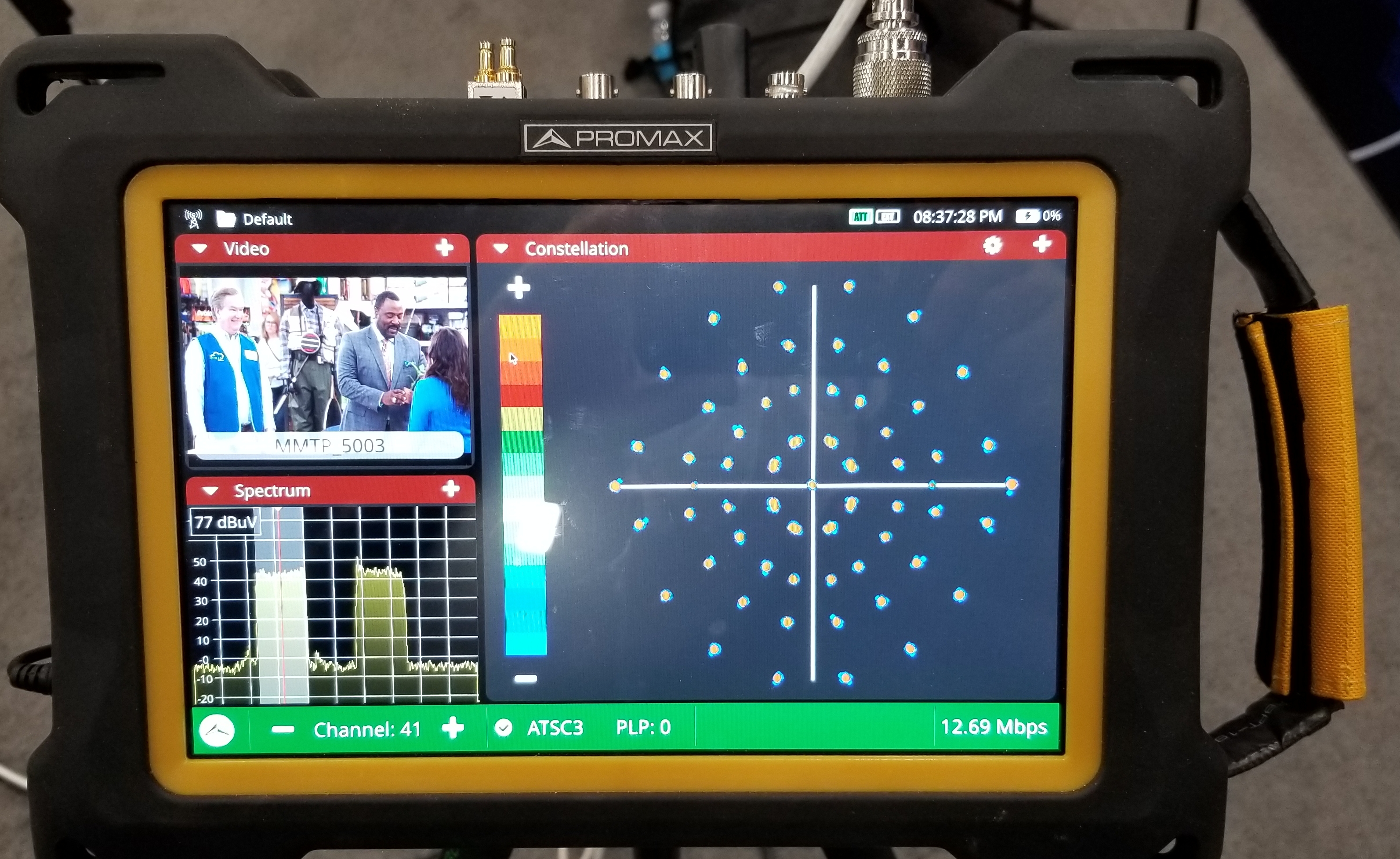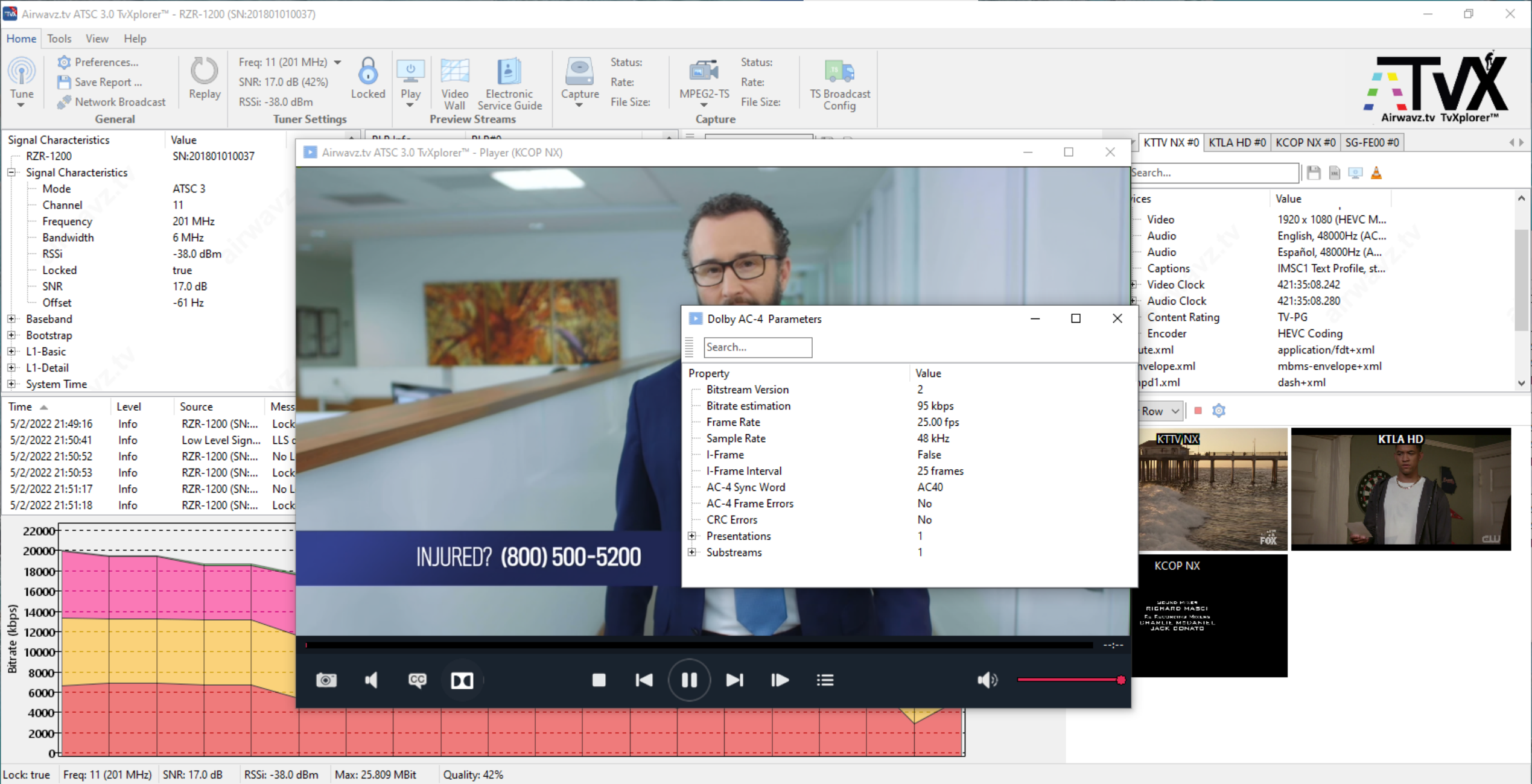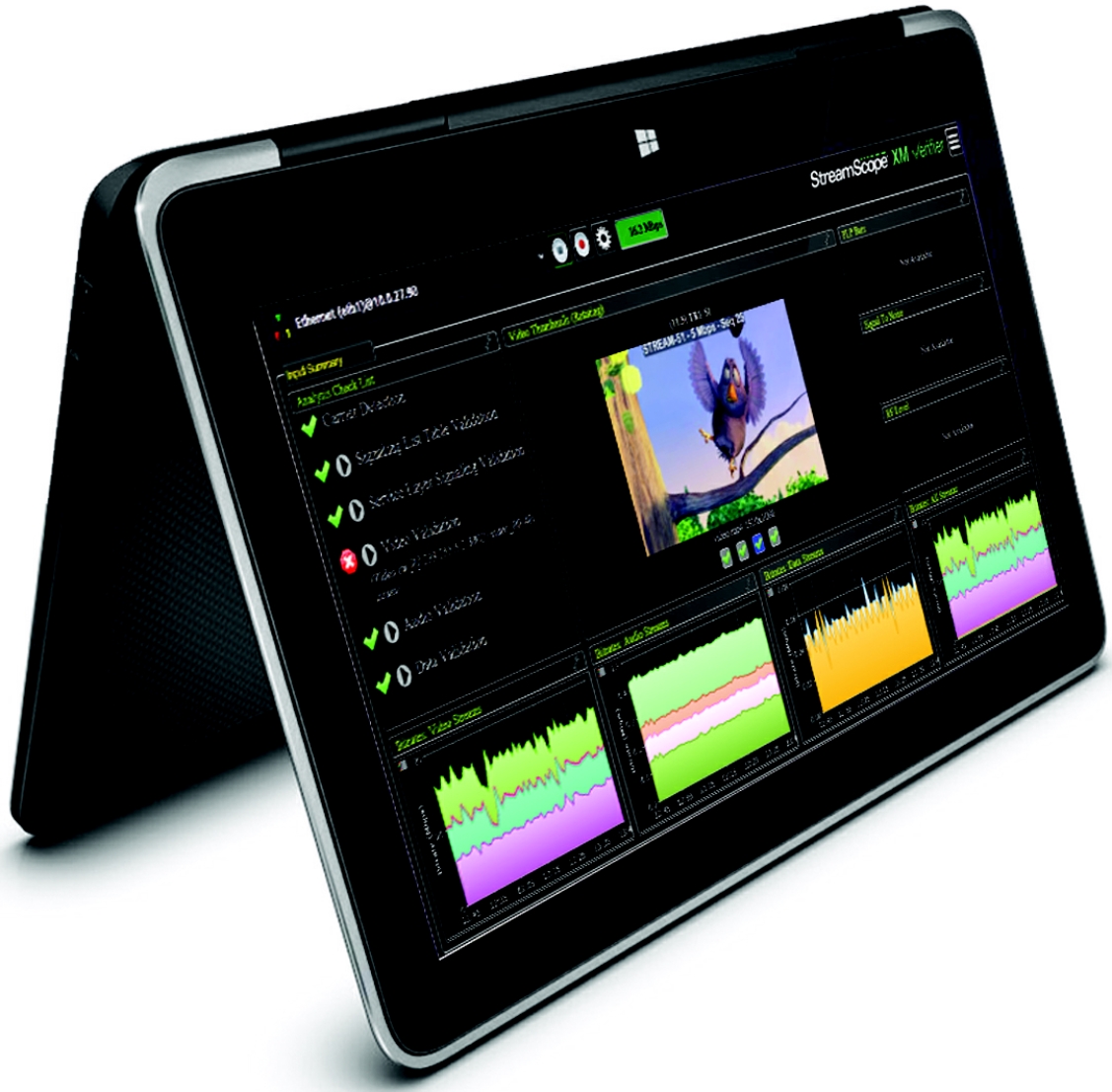RF at the NAB Show—ATSC 3.0 Analysis, Part 1
At the 2019 NAB Show, repack was a big topic; with that phase over, focus this year shifted to launching ATSC 3.0

Part 1 of 2
After three years it was great to get back together with fellow engineers and exhibitors at the NAB Show in Las Vegas. Official attendance was more than 50,000 people but with the new LVCC West Hall and spread-out exhibits with plenty of meeting spaces, it was busy but not crowded.
Like many attendees I spent time catching up with old friends. With the repack over, the focus shifted to launching ATSC 3.0 and that will be the main topic of my convention review, specifically analysis of ATSC 3.0 signals.
Saankhya Labs
I looked for low-cost ATSC 3.0 receive devices such as USB tuners, excluding complete TV sets. New at the NAB Show were devices from Saankhya Labs in India. They are using a chip developed with Coherent Logic that can decode all DTV formats, including ATSC 3.0.
The company does not sell directly to consumers but was showing a smartphone with a built-in ATSC 3.0 receiver as well as a dongle that will work with a smartphone with a USB port. (Fig. 1 shows the dongle in use receiving an ATSC 3.0 broadcast from Saankhya Labs’ low-power transmitter that will be offered for use as a low-power ATSC 3.0 booster.) Tolka also showed a dongle it plans to offer for sale to broadcasters.
Airwavz
There were several products on display for analyzing ATSC 3.0 signals. The lowest cost options, both from Airwavz, remain the RedZone Receiver Plus (RZR-1400) and new TVXplorer 2.0 software, which was released at the show. TVXplorer 2.0 now includes the ability to decode and analyze Dolby AC4 audio as well as providing thumbnails of all the video streams with up to four concurrent PLPs. With the new version, the price increased to $2,595. The RZR-1400, which uses the Sony receiver chip, is $900.
I think I was the first person to buy TVXplorer 2.0. I didn’t get it installed in my Windows 10 VM until after the NAB Show but had a chance to test it in Los Angeles. It worked fine, with both video and audio playing along with full details on all the tables and a service guide.
The software comes with a lifetime license and development is continuing. I was told an update might support the Silicon Dust tuner, which would dramatically lower the cost of the package and help keep it competitive with the alternatives. The dongle and software are available on-line at https://redzonereceiver.tv/ or from Comark or Unisoft.
The professional video industry's #1 source for news, trends and product and tech information. Sign up below.
Dektec
Dektec showed a new USB DTV tuner that is SDR-based, so it can handle multiple standards and looks like the Dektec USB universal DTV modulator. The device comes with basic software to decode ATSC 3.0 tables, but for a complete analysis, it needs to be paired with software like Triveni’s StreamScope XM or Stream Verifier.
The software does not currently include a spectrum analyzer but since the receiver is SDR-based it shouldn’t be too difficult to add that in the future. The cost is under $4,000.
ENENSYS
I knew ENENSYS was one of the leaders in developing ATSC 3.0 scheduler and gateway products but didn’t learn about their range of ATSC 3.0 monitoring equipment until I visited their booth at the show. Their “REFEREE3,” introduced at the last NAB Show in 2019, provides ATSC 3.0 signal characteristic measurements (useful for field tests) as well as stream analysis down to the frame level.
For more detailed measurements at a fixed location, they have the “Edge Probe.” I don’t have room to list all the features here. See www.test-tree.com/product/atsc-advanced-monitoring-probe/ for details on it and other ENENSYS monitoring products.
IPguard
Another item that caught my attention was the IPguard, which can monitor ATSC 3.0 STL-TP streams and switch to a backup in case of a failure. The switch depends on a flag inserted in the stream, which I hope will be supported by other scheduler/gateway vendors.
Promax
All the portable measurement devices I’ve described so far require a laptop or computer for operation. Promax was showing a new standalone portable in their Ranger line that offers ATSC 3.0 reception, including video and RF constellation displays and a spectrum analyzer. With tabs on the display, you can view table content and signal characteristics.
I was told it will support LDM, which could come in handy for field measurements. It also includes an Ethernet port for monitoring IP streams and logging data on a laptop. Pricing had not been set but was expected to be slightly above the price of their other Ranger units, which would put it in the $10,000 range. As of May 1, no data on this unit was available on the company’s website (promaxelectronics.com).
Triveni Digital
Most readers are familiar with the Triveni StreamScope XM ATSC 3.0, which has become the standard for detailed ATSC 3.0 signal analysis.
They now offer a lower-cost product, the Stream Verifier, for around $4,000, which provides basic data on the ATSC 3.0 stream and a quick check on the quality and compliance of the stream. It needs to be paired with a compatible ATSC 3.0 receiver such as their dongle, one of the Dektec receivers or the Avateq receiver.
Avateq
Avateq had their line of ATSC1.0 and ATSC 3.0 monitoring receivers on display, including the AVQ-200. Avateq is now offering STL-TP analysis in their products.
One thing to keep in mind when considering ATSC 3.0 monitoring is whether the device or software will continue to be able to display video and audio after broadcasters begin encrypting streams. While all the tables and signal characteristics should remain available (unless the device has a key from A3SA, the ATSC 3.0 security authority), they will not be able to display encrypted content.
Tablo
Preparation for encryption caused Tablo to delay the release of their ATSC 3.0 gateway and DVR product until they could modify the hardware to support the keys. Since the key has to be in secure storage it could not be offered as a firmware update.
The introduction of digital rights management should not be an issue for most if it can be handled the same way NetFlix, Hulu and other streaming services protect their content. If implementation is more onerous, then it could slow the adoption of ATSC 3.0 by limiting the development of new ATSC 3.0 devices and the options viewers have to receive ATSC 3.0 broadcasts.
In Part 2, I’ll have more on my experiences with the TvxPlorer 2.0 program, using the HDHomeRun ATSC 3.0 gateway in a portable configuration; a description of the NAB session dealing with drone measurement of antenna patterns and RF system heating; and some transmitter- and antenna-related NAB Show news I didn’t have room to include here.
As always, I welcome comments and questions. Email me at dlung@transmitter.com. I try to answer all emails promptly, but if I’m busy and the email gets buried, I might miss it. If you don’t get a response within a week or so, email me again.

Doug Lung is one of America's foremost authorities on broadcast RF technology. As vice president of Broadcast Technology for NBCUniversal Local, H. Douglas Lung leads NBC and Telemundo-owned stations’ RF and transmission affairs, including microwave, radars, satellite uplinks, and FCC technical filings. Beginning his career in 1976 at KSCI in Los Angeles, Lung has nearly 50 years of experience in broadcast television engineering. Beginning in 1985, he led the engineering department for what was to become the Telemundo network and station group, assisting in the design, construction and installation of the company’s broadcast and cable facilities. Other projects include work on the launch of Hawaii’s first UHF TV station, the rollout and testing of the ATSC mobile-handheld standard, and software development related to the incentive auction TV spectrum repack. A longtime columnist for TV Technology, Doug is also a regular contributor to IEEE Broadcast Technology. He is the recipient of the 2023 NAB Television Engineering Award. He also received a Tech Leadership Award from TV Tech publisher Future plc in 2021 and is a member of the IEEE Broadcast Technology Society and the Society of Broadcast Engineers.



